
Time for another Sunday with Sergey, as I am taking another weekend “off.” Rest and relaxation at last!
By SERGEY KADINSKY
Forgotten New York correspondent
On the northern edge of Canarsie next to the Bay Ridge Branch freight line are nine nearly identical blocks of wholesale warehouses containing produce, ethnic foods, and plants. Prior to 1942, Brooklyn’s terminal market was located at Wallabout Bay on a Dutch-revival style campus that was consumed by the Brooklyn Navy Yard during World War II.
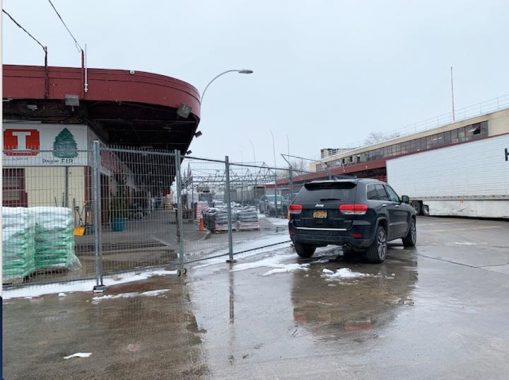
A new market site was quickly set up in Canarsie, initially in wooden structures, and then in single-story warehouses that offer nothing decorative in their appearance. Knowing Kevin Walsh, he’s likely fascinated by city-issued street lamps that are attached to these buildings.
Why, that’s right, since the BTM is the only place you’ll see cobra neck and double-masts affixed to buildings instead of octagonal poles. –ed.
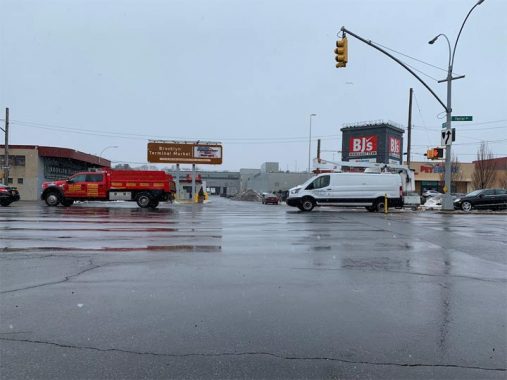
The market is one of many that were established during the administration of Mayor Fiorello LaGuardia. Other examples include the former Bronx Terminal Market, and nearly a dozen indoor retail markets, as documented by Turnstile Tours. This market is far from the subway and the city center, known best to the people who rely on it.

The first indicator that there is a wholesale market deep in eastern Brooklyn is Foster Avenue, which widens from two lanes into a boulevard comparable to Kings Highway or Queens Boulevard, to accommodate the trucks at the market. This road takes the place of Avenue E, its name honoring Charles Foster, a member of the United Freemen’s Association that developed South Greenfield. The organization’s members were mostly Irish immigrants who supported temperance. After it passes the market, it narrows back to two lanes.
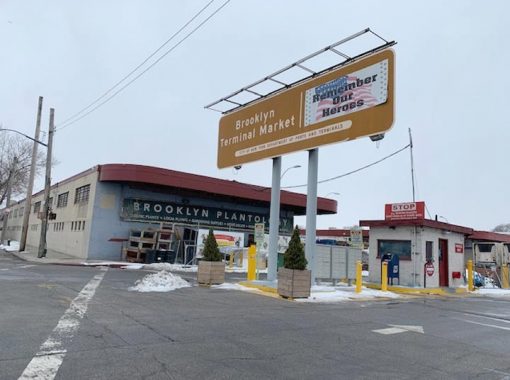
The main entrance to the market has a brown sign whose color is usually associated with park access roads. I work for the city and I did not know that the Department of Ports and Terminals was abolished. The successor to the Department of Docks, its name hearkens back to the city’s history as a major seaport. In 1991, it was abolished, with its functions assigned mostly to the Department of Small Business Services, and the Economic Development Corporation. This market is presently run as a private cooperative.
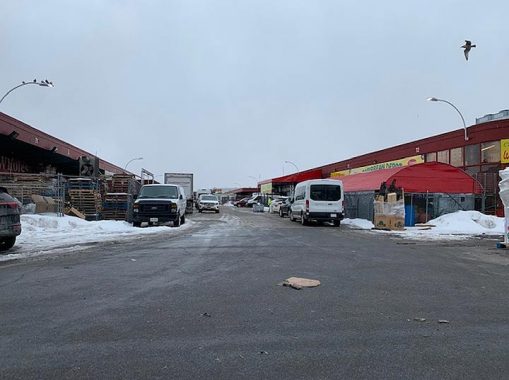
Like its predecessor at the Navy Yard, this market has its own system of roads: North Market Street, Center Market Street, and South Market Street, that are paved in concrete to accommodate trucks. Each of the nine blocks of this 25-acre market has awnings that cover the sidewalk, similar to the buildings of the Meatpacking District.
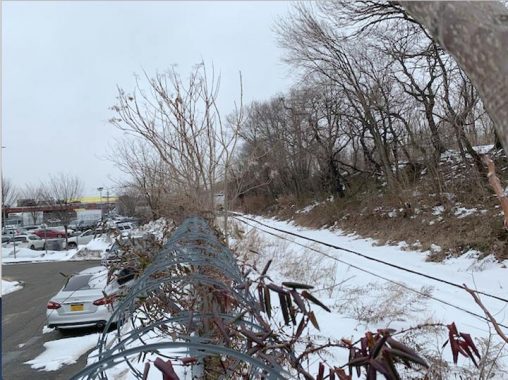
The LIRR Bay Ridge Branch has a siding that provides freight service to the market and I am not sure how often this track is in use. It appears very rusty. Prior to 1924, the line had passenger service and there are longstanding proposals to either revive it or reuse it as a subway line. There have also been plans over the past century to extend this line to New Jersey through a Cross-Harbor Tunnel.
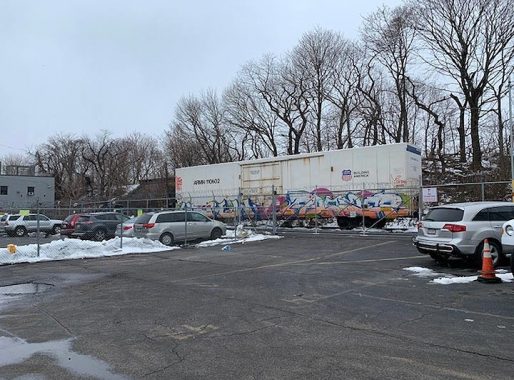
At the end of this siding, a lone boxcar indicates that this track is not abandoned. Facing the track is the Ba-Tampte Pickle warehouse, one of the city’s leading kosher pickle producers. The -e in its name is silent. As its slogan indicates, the name originates from the Yiddish term batampt, which is sourced from the Hebrew taam, meaning taste. Ba-Tampte shares its block with another industry stalwart, Mr. Pickle, whose mascot’s cane, hat, and posture resemble the Planter’s Peanut.
At the turn of the 20th century, there were so many immigrant Jews in the pickle business, that a stretch of Essex Street on the Lower East Side was known as Pickle Alley or Pickle District. The other NYC pickle greats, Guss’ Pickle is in downtown Brooklyn. In the old neighborhood, Russ & Daughters can still be found on Houston Street.
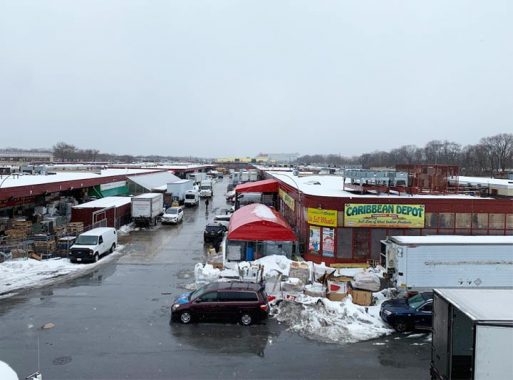
On the eastern edge of Brooklyn Terminal Market is the Canarsie Plaza shopping center, completed in 2011. The rooftop parking lot here offers panoramic views of the market, looking west towards Manhattan.
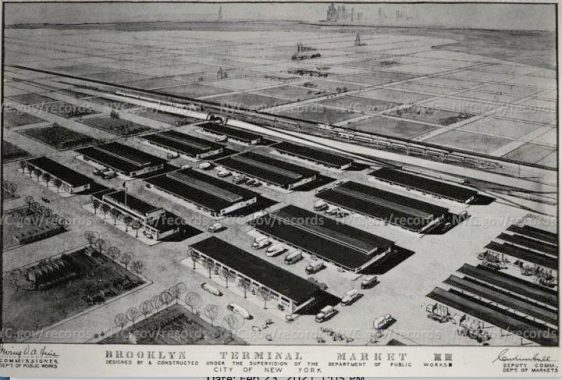
The view hasn’t changed much since the city published a rendering of this market in 1941. The outdoor stalls on the lower right of this plan have since been developed as Canarsie Plaza. Plans were also made for a Manhattan Terminal Market at Gansevoort Street and the Hudson River, but only the meat portion of that market was completed. Bronx Terminal Market was redeveloped in 2009 as a shopping center, park, and museum. The two other boroughs, Queens and Staten Island never had their own “terminal markets.”
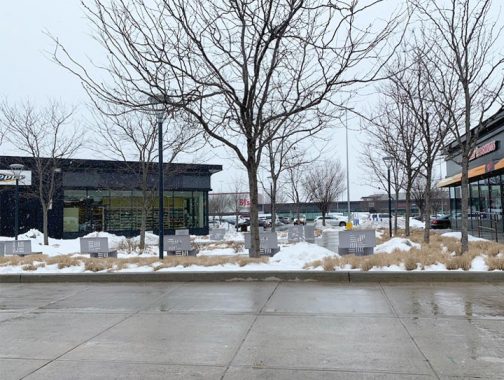
The parking lot of Canarsie Plaza is enclosed by shops to give it the appearance of a town square and there is a sitting area in one corner of this strip mall. It’s a thoughtful touch in a neighborhood with few parks.
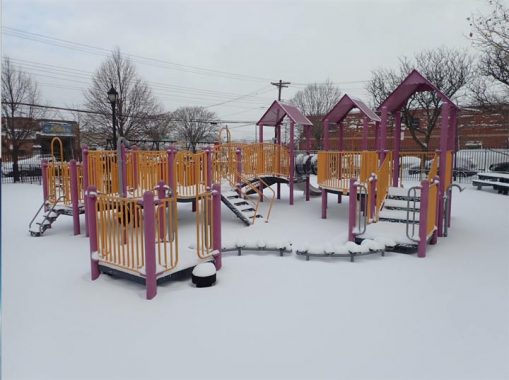
There is another park close to Brooklyn Terminal Market, the one-acre Curtis Playground, named after local Councilman Sam Curtis. Located at Foster Avenue and East 82nd Street, it was dedicated in 1975. His name may not mean much to today’s Canarsie residents, but in the 1950s and 1960s he fought against the clustering of public housing in eastern Brooklyn, fearing an uptick in crime.
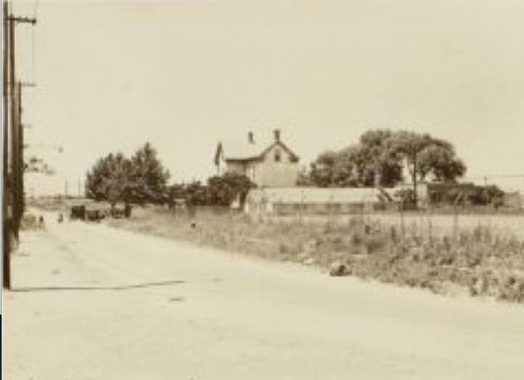
Prior to the development of the market, this section of Canarsie was farmland with Canarsie Lane as its only road, as seen in this 1933 photo. There are five hints of this ancient road that can be seen today. The position of the Wyckoff House skews off the street grid, indicating where Canarsie Lane used to run. Pieces of it appear at Ralph Avenue and E. 83rd Street, and another at a triangle on the corner of Kings Highway and Clarendon Road.
Kevin identified Canarsie Lane in this 1898 USGS survey as the eastern continuation of Cortelyou Road. Now here are two more hints of Canarsie Lane that have not been previously reported here.
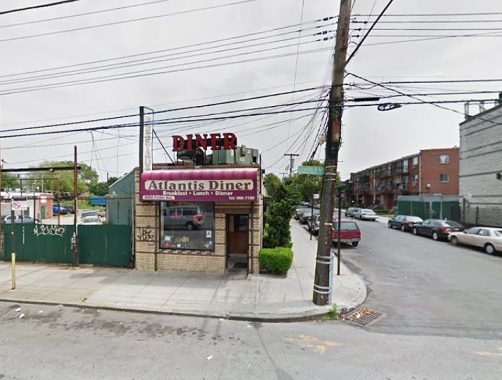
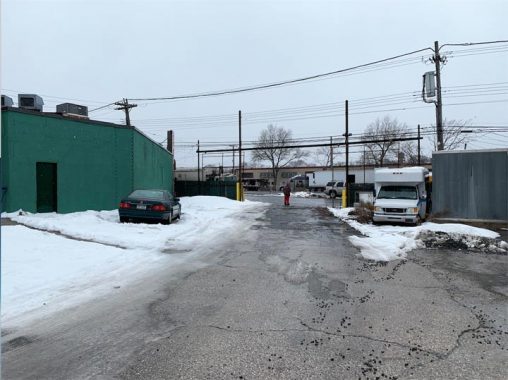

Across the street from Brooklyn Terminal Market, at Foster Avenue and E. 86th Street is Atlantis Diner, whose eastern wall skews from the street grid. The driveway here is a remnant of Canarsie Lane. It leads to a bus parking lot where the fence is decorated with old road signs.
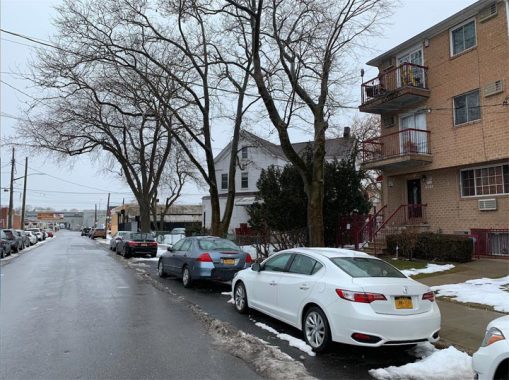
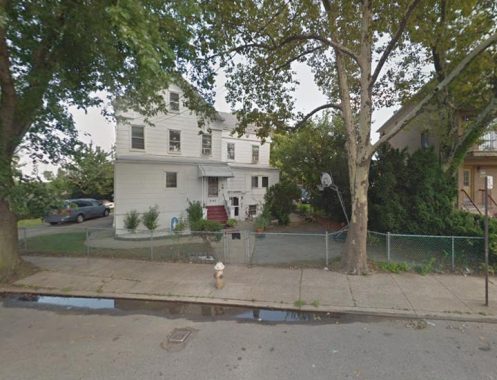
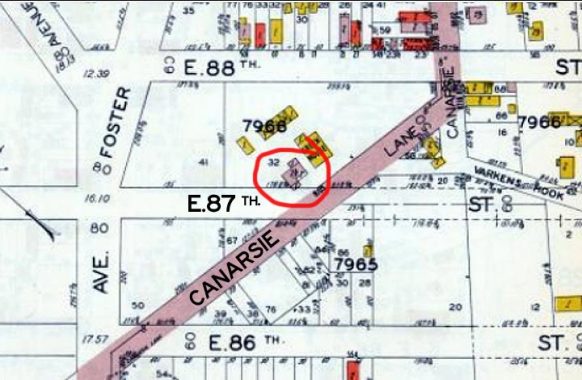
The final hint of Canarsie Lane is 543 E. 87th Street, which also skews from the grid. Until 1961, it was surrounded by farmland. The house is not landmarked, but how about its age? Canarsie Courier reports that it was built in 1787 and owned by the Schenck and Lott families, whose history in Brooklyn extends to the Dutch period. Both surnames appear on the map of Brooklyn. Continue a block south to find another colonial alley, Varkens Hook Road, and there are many more in Canarsie that have been documented by Kevin.
This 1929 map excerpt shows Canarsie Lane and the house. Streets shown in white were mapped but not yet paved; Canarsie Road, in purple, was the only well-traveled road in the area. Today, a piece between East 88th and 92nd Streets survives as Bedell Lane. –ed.
Sergey Kadinsky is the author of Hidden Waters of New York City: A History and Guide to 101 Forgotten Lakes, Ponds, Creeks, and Streams in the Five Boroughs (2016, Countryman Press) and the webmaster of Hidden Waters Blog.
Check out the ForgottenBook, take a look at the gift shop, and as always, “comment…as you see fit.”
2/27/21

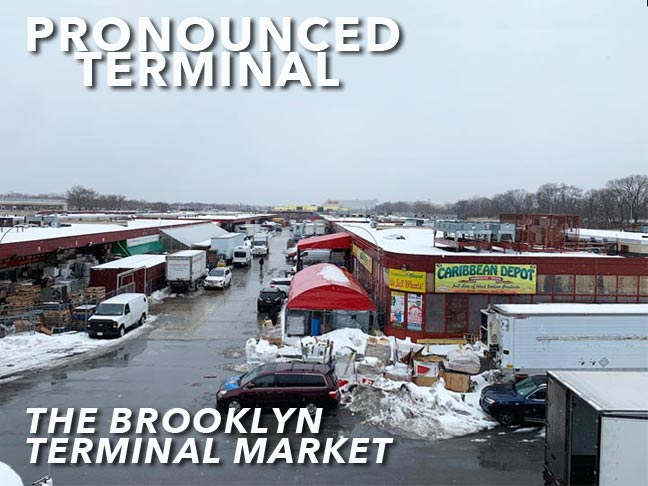
6 comments
20 years ago it was a good place to buy vegetable seedlings in the spring.
I wonder if there are terminal markets in Queens or Staten Island, because I don’t seem to hear about them much?
I enjoy your articles, Sergey; but PUH_LEASE!!!! Ixnay on using the word “campus” to describe Wallabout Market. It was a market; no more, no less. Everybody jumps on the bandwagon and overuses a particular word or phrase to death. “Calculus” was another example of semantic satiation ten years ago, along with “rule of law” and “truth to power”, “awesome”, “epic” and “viral”.
Great information, Sergey. So hard to believe these quaint neighborhoods with old Dutch origins still exist in New York city. Your last photo of the Schenck home on East 87th Street reminds one of the
Jan Martense Schenck House (1676) on exhibit at the Brooklyn Museum. It was transported to the museum and installed there in 1964 to show early interiors. See their excellent summary,
“Two Dutch Houses: Meet the Schencks.” It is rich in historic photographs from the Brooklyn Museum collections..
A good place to buy Christmas trees etc.
Brooklyn Terminal Market is where my dad taught me to drive a car. He would drive me there on a quiet Sunday and when I took the wheel, he would direct me to drive, stop, make turns etc. We weren’t the only ones doing driver training. Other parents were using the closed Sunday market to teach their children to to drive.